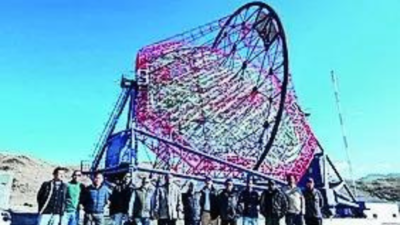- News
- City News
- mumbai News
- Ladakh’s Hanle gets world’s highest imaging observatory
Trending
Ladakh’s Hanle gets world’s highest imaging observatory
India on October 4 inaugurated Asia's largest and world's highest imaging observatory at Hanle, Ladakh. Built by BARC with ECIL and other partners, the Major Atmospheric Cherenkov Experiment Observatory will enhance Indian astrophysics and cosmic ray research. Situated at 4,300m, it aims to deepen understanding of energetic cosmic events like gamma ray bursts and supernovae.

Inaugurated by Ajit Kumar Mohanty, department of atomic energy (DAE) secretary and chairman of atomic energy commission, the observatory was built by Bhabha Atomic Research Centre (BARC) in collaboration with Electronic Corporation of India Limited and other Indian industry partners.

According to DAE, the Major Atmospheric Cherenkov Experiment Observatory (MACE) will play a major role in development of Indian astrophysics and cosmic ray research.
Situated at an altitude of 4,300m, "the telescope will observe high-energy gamma rays, contributing to global efforts to understand the most energetic phenomena in the universe, like supernovae, black holes and gamma ray bursts", says DAE.
This facility will also complement global observatories, strengthening India's position in the field of what is known as "multi-messenger" astronomy, it adds. The project aims at fostering international collaboration, advancing India's contributions to space research and bolstering India's position in global scientific community.
Mohanty said it will pave the way for a deeper understanding of universe's most energetic events. He emphasised that MACE will play a role not only in advancing scientific research, but also in supporting socio-economic development of Ladakh.
End of Article
FOLLOW US ON SOCIAL MEDIA










